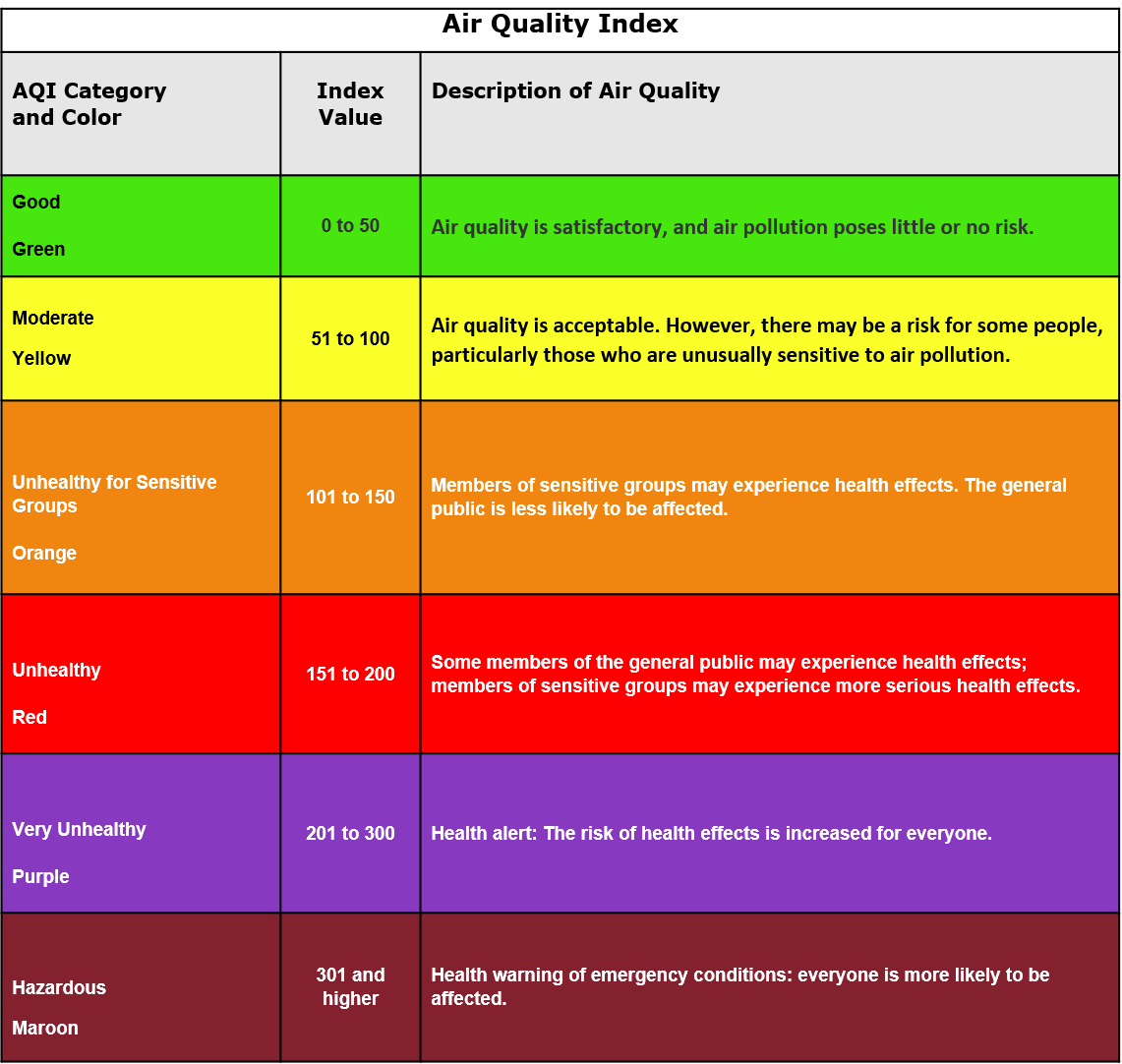Air Quality Index
About Air Quality Index (AQI)
- AQI is a number, which is a measure of air quality. The higher the AQI, the worse the air.
- The colour-coded AQI index was launched by the Government of India in 2014, and it helps the public and the government understand the condition of the air and what subsequent measures are to be taken to combat the situation, based on its severity.

- There are six categories of AQI, namely ‘Good’ (0-50), ‘Satisfactory’ (51-100), ‘Moderately polluted’ (101-200), ‘Poor’ (201-300), ‘Very Poor’ (301-400), and ‘Severe’ (401-500).
- The pollutants measured include PM 10, PM 2.5, Nitrogen Dioxide, Ozone, Carbon, etc.
What is the impact of these pollutants?
- Among the more harmful pollutants are those of a smaller size, such as particulate matter (PM) 2.5, which is an atmospheric particulate matter of diameter smaller than 2.5 micrometres.
- It causes respiratory problems and reduces visibility. The particles can only be detected with the help of an electron microscope because they are so small.
- Due to their size, the PM 2.5 particles can easily bypass the nose and throat and can easily enter the circulatory system. The particles can also lead to chronic diseases such as asthma, heart attack, bronchitis and other respiratory problems.
Why in News?
- Delhi’s air quality index (AQI) has again gone back to the ‘poor’ category (279)
Tag:Air Quality Index, AQI, Carbon, Nitrogen Dioxide, Ozone, PM 10, PM 2.5
Subscribe
Login
0 Comments
